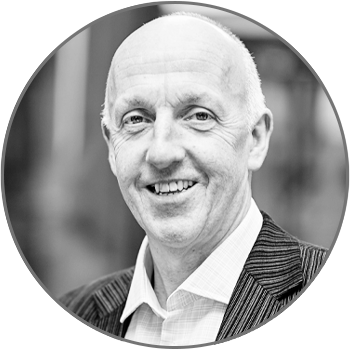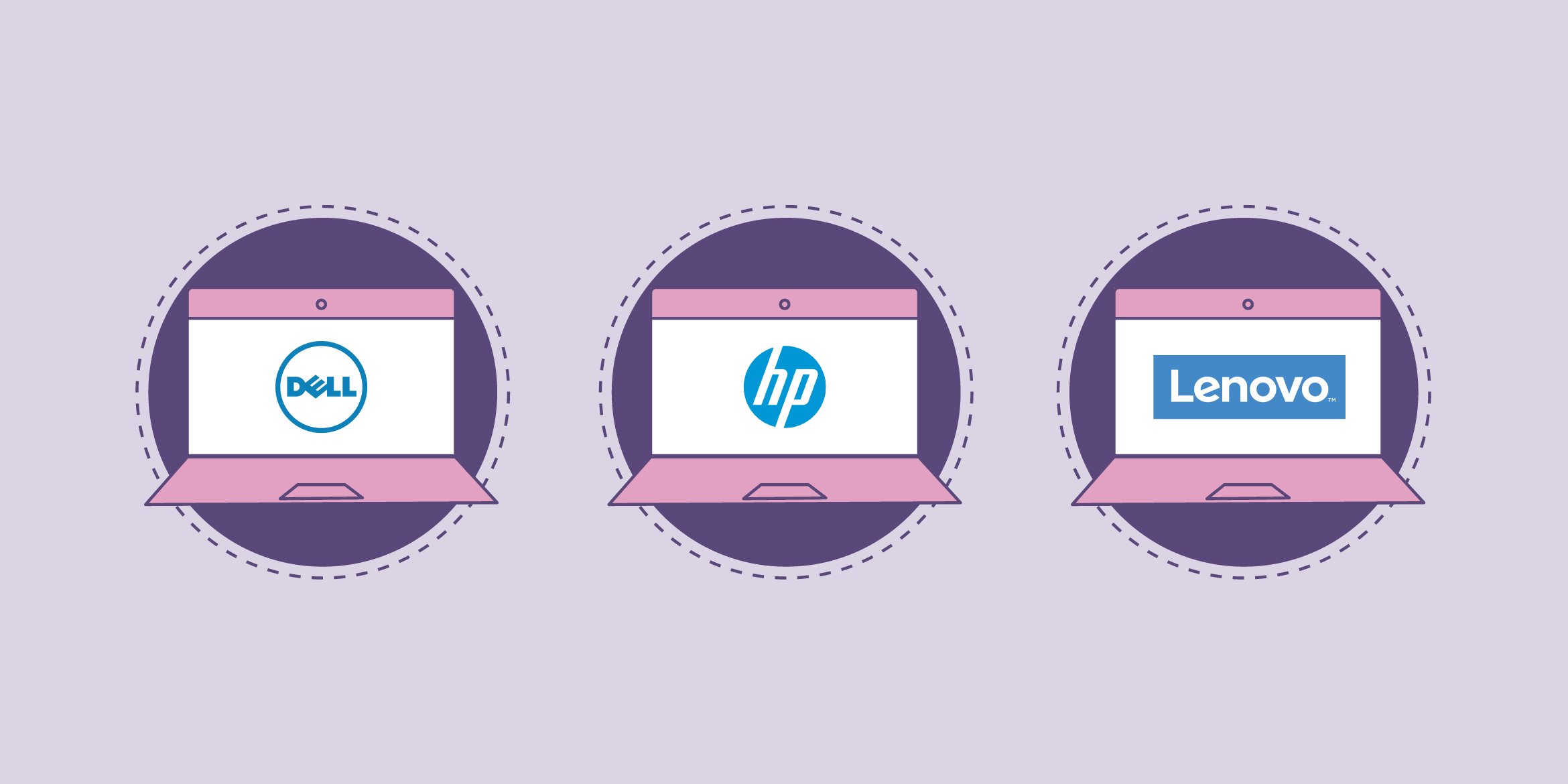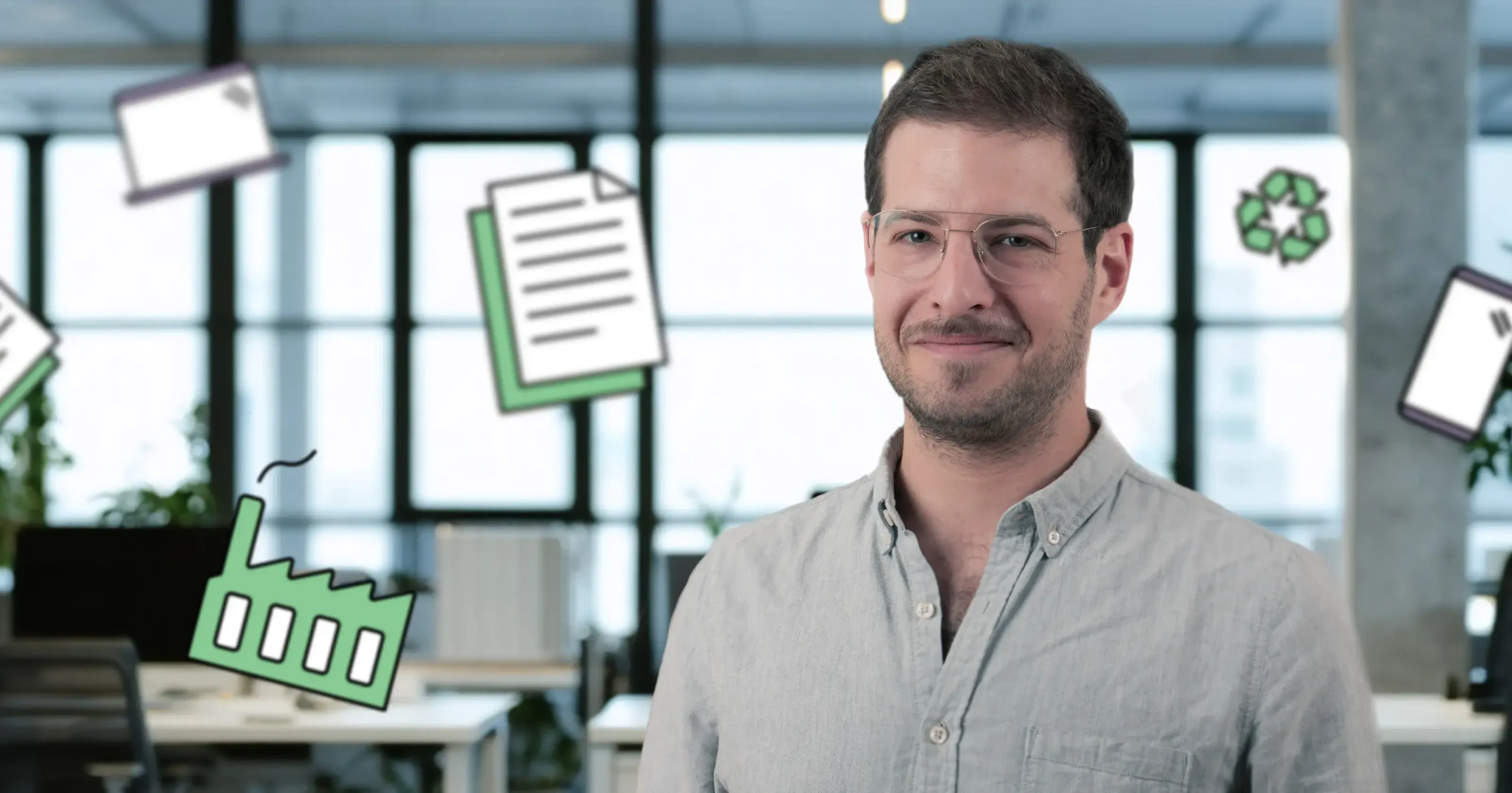A lot needs to be done to ensure IT products have a sustainable and circular life cycle. We have spoken to the three largest notebook computer brands to get a snapshot of how the transition is going.

Tom Moriarty
Responses from Dell have been provided by Tom Moriarty, who is responsible for energy efficiency and eco-design regulations and standards in Europe, the Middle East and Africa.

Madeleine Bergrahm
HP is represented by Madeleine Bergrahm, Nordic sustainability manager, who also works on issues related to public procurement in the EU.

Thomas Hedin
From Lenovo, we spoke to Thomas Hedin who is responsible for environmental and sustainability issues in the Nordics and Benelux.
To what extent is your organization stuck in the linear Economy?
![]() Dell was started with an efficient supply chain model and a commitment to designing products with the whole lifecycle in mind. Increasingly, that has meant embracing a circular approach and the idea of systems thinking. We began using recycled-content plastics in some desktop products in 2007 and have increased the scope and volume of our efforts since, creating a closed-loop process in 2014 that recycles plastics reclaimed through our takeback programs back into new components for new computers. Still, the transition is ongoing and much more needs to be done. We have set a goal to take back one “like” product for every product we deliver to customers but have a long way to go. We also aspire to increase recycled and renewable content in our products to more than 50 percent and in our packaging to a full 100 percent — all by 2030. These are lofty goals, and we must dig deep into our portfolio to identify the scalable opportunities.
Dell was started with an efficient supply chain model and a commitment to designing products with the whole lifecycle in mind. Increasingly, that has meant embracing a circular approach and the idea of systems thinking. We began using recycled-content plastics in some desktop products in 2007 and have increased the scope and volume of our efforts since, creating a closed-loop process in 2014 that recycles plastics reclaimed through our takeback programs back into new components for new computers. Still, the transition is ongoing and much more needs to be done. We have set a goal to take back one “like” product for every product we deliver to customers but have a long way to go. We also aspire to increase recycled and renewable content in our products to more than 50 percent and in our packaging to a full 100 percent — all by 2030. These are lofty goals, and we must dig deep into our portfolio to identify the scalable opportunities.
![]() If you look at what we sell, we’re clearly hardware-heavy at the moment, but our strategy includes the goal of moving towards providing more services. That’s where we want to go. In print, we’ve sold printing services instead of selling printers as pieces of hardware for a long time. We’ve had a ”closed loop” for the recycling of toner cartridges for 27 years, and in the past 12 months have added hardware such as PCs and printers to the list of products from which we reuse materials in a similar way. This is a circular service, it’s just that nobody has described it as such.
If you look at what we sell, we’re clearly hardware-heavy at the moment, but our strategy includes the goal of moving towards providing more services. That’s where we want to go. In print, we’ve sold printing services instead of selling printers as pieces of hardware for a long time. We’ve had a ”closed loop” for the recycling of toner cartridges for 27 years, and in the past 12 months have added hardware such as PCs and printers to the list of products from which we reuse materials in a similar way. This is a circular service, it’s just that nobody has described it as such.
![]() Our business is based on developing and selling products, which is linear. But we have also worked with Asset Recovery for many years, which is a service where we buy back products from customers, revamp them and resell them, so they get a new lease of life. We know that our products have a high second-hand value and can have a considerably longer life than our customers typically keep them. For example, as an add-on service, we can offer up to five years’ warranty on our business products. We have also worked with products as services for a number of years, a type of lease or “Device as a Service”. This does not yet represent a major share of sales, but we are ready for it to grow.
Our business is based on developing and selling products, which is linear. But we have also worked with Asset Recovery for many years, which is a service where we buy back products from customers, revamp them and resell them, so they get a new lease of life. We know that our products have a high second-hand value and can have a considerably longer life than our customers typically keep them. For example, as an add-on service, we can offer up to five years’ warranty on our business products. We have also worked with products as services for a number of years, a type of lease or “Device as a Service”. This does not yet represent a major share of sales, but we are ready for it to grow.
What is circularity for you?
![]() It is related to the inputs and materials used as well as how those are recovered, but it also extends to the way value is delivered or created. By looking at the whole system, we can use resources more efficiently and for longer periods of time. Our circular economy programs are built on a foundation of actively applying sustainability thinking to the lifecycle of our products and services. Our product engineers understand that you must design with the end in mind – how can we ensure the materials in our technology can be kept in the economy when a customer is done with the product. We design to make sure things are modular and easy to repair, so that end doesn’t happen before it should.
It is related to the inputs and materials used as well as how those are recovered, but it also extends to the way value is delivered or created. By looking at the whole system, we can use resources more efficiently and for longer periods of time. Our circular economy programs are built on a foundation of actively applying sustainability thinking to the lifecycle of our products and services. Our product engineers understand that you must design with the end in mind – how can we ensure the materials in our technology can be kept in the economy when a customer is done with the product. We design to make sure things are modular and easy to repair, so that end doesn’t happen before it should.
![]() It’s partly about things like reducing use of non-renewable raw materials by using a greater proportion of recycled materials. But this is just the tip of the iceberg. It’s really the business model we need to look at. How do we change as an organization internally? It’s also about cooperation with users and others. It doesn’t matter if a product contains 50 percent recycled material if it isn’t used long enough, and isn’t recycled, or is recycled in the wrong way. This is super-interesting and we need to work together with users. It’s all about teamwork.
It’s partly about things like reducing use of non-renewable raw materials by using a greater proportion of recycled materials. But this is just the tip of the iceberg. It’s really the business model we need to look at. How do we change as an organization internally? It’s also about cooperation with users and others. It doesn’t matter if a product contains 50 percent recycled material if it isn’t used long enough, and isn’t recycled, or is recycled in the wrong way. This is super-interesting and we need to work together with users. It’s all about teamwork.
![]() It’s partly the business side of things as I just described. And it’s partly about how products are manufactured – that we take in more recycled material, plastics and metals. We’ve worked on this for many years. Some of our products contain 85 percent recycled plastic and are certified according to TCO Certified Edge. We also work with collecting used products, both in Europe, where there are regulations concerning this, and in other regions where such systems are not in place. We have tough requirements in terms of how materials are managed to ensure they are recycled correctly.
It’s partly the business side of things as I just described. And it’s partly about how products are manufactured – that we take in more recycled material, plastics and metals. We’ve worked on this for many years. Some of our products contain 85 percent recycled plastic and are certified according to TCO Certified Edge. We also work with collecting used products, both in Europe, where there are regulations concerning this, and in other regions where such systems are not in place. We have tough requirements in terms of how materials are managed to ensure they are recycled correctly.
What are the challenges going forward?
![]() ICT is a rapidly evolving technology and placing restrictions on innovation and design techniques can lead to unintended consequences resulting in the exclusion of new technologies in future designs. The broad range of agendas of different stakeholders engaged in developing circular economy regulatory policies can create challenges in developing cost-effective solutions. Case in point are initiatives around reparability. Solutions need to consider the quality of the repair and the liability for the repair when legislation is being enacted.
ICT is a rapidly evolving technology and placing restrictions on innovation and design techniques can lead to unintended consequences resulting in the exclusion of new technologies in future designs. The broad range of agendas of different stakeholders engaged in developing circular economy regulatory policies can create challenges in developing cost-effective solutions. Case in point are initiatives around reparability. Solutions need to consider the quality of the repair and the liability for the repair when legislation is being enacted.
![]() One challenge is that we manufacture such a large number of products so it is difficult to manage small flows of recycled materials. We need suppliers that can provide large flows of consistent quality. The transition to circularity is also an internal process — how do we change so that our sales people and not only our service sales people know how to sell a service? How do we generate revenue for that, how does payroll look? Similarly with our retailers; in our relationships do we need to rethink so that they are paid to sell a service rather than a product. We’re only at the start of that process. But above all, we need to get users and customers to see the value of buying a service instead of a hardware product.
One challenge is that we manufacture such a large number of products so it is difficult to manage small flows of recycled materials. We need suppliers that can provide large flows of consistent quality. The transition to circularity is also an internal process — how do we change so that our sales people and not only our service sales people know how to sell a service? How do we generate revenue for that, how does payroll look? Similarly with our retailers; in our relationships do we need to rethink so that they are paid to sell a service rather than a product. We’re only at the start of that process. But above all, we need to get users and customers to see the value of buying a service instead of a hardware product.
![]() In terms of sales of refurbished products, we don’t actually see any challenges. It’s a service to be able to offer this to our customers who want to see a return on their old products. In terms of recycled materials, it’s a challenge that there isn’t enough recycled plastic of sufficiently good quality. Notebooks need to be thin and lightweight, so it’s harder to use simpler types of recycled plastic. It’s easier with displays, as weight isn’t such a factor. We also have a number of products with which we use aluminium and other lighter metals instead of plastic.
In terms of sales of refurbished products, we don’t actually see any challenges. It’s a service to be able to offer this to our customers who want to see a return on their old products. In terms of recycled materials, it’s a challenge that there isn’t enough recycled plastic of sufficiently good quality. Notebooks need to be thin and lightweight, so it’s harder to use simpler types of recycled plastic. It’s easier with displays, as weight isn’t such a factor. We also have a number of products with which we use aluminium and other lighter metals instead of plastic.
What are the most effective ways of accelerating the development of circularity in your organization?
![]() Collaboration is a key factor in the success of circular economy programs. Internally, commitment is necessary from all levels of the organization, working from both the bottom up and from the top down. In Dell we are fortunate that Michael Dell embraces the circular economy and there is executive support for environmental initiatives that advance the circular economy programs.
Collaboration is a key factor in the success of circular economy programs. Internally, commitment is necessary from all levels of the organization, working from both the bottom up and from the top down. In Dell we are fortunate that Michael Dell embraces the circular economy and there is executive support for environmental initiatives that advance the circular economy programs.
![]() Demand from buyers. We can develop the hardware ourselves. But a circular product is a collaboration with the user. Currently, only a small number of buyers are interested. If the interest was there, we could develop these services more.
Demand from buyers. We can develop the hardware ourselves. But a circular product is a collaboration with the user. Currently, only a small number of buyers are interested. If the interest was there, we could develop these services more.
![]() An important parameter is to ensure that recycling of, for example, plastics is improved. Projects are underway in Sweden and in many other countries to improve recycling of plastics from electronics and IT products, which we see as a positive trend. Demand from our customers for refurbished products is also key of course. As things look today, on the Nordic market, the majority of refurbished products are sold to other countries in Europe.
An important parameter is to ensure that recycling of, for example, plastics is improved. Projects are underway in Sweden and in many other countries to improve recycling of plastics from electronics and IT products, which we see as a positive trend. Demand from our customers for refurbished products is also key of course. As things look today, on the Nordic market, the majority of refurbished products are sold to other countries in Europe.




